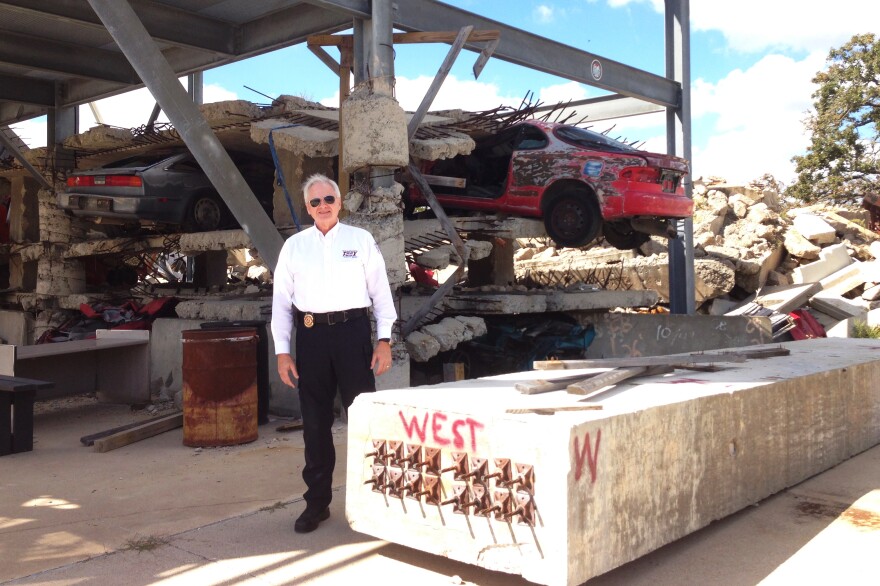About three hours southeast of Dallas, there's a city that's been hit by almost every disaster you could imagine including earthquakes, hurricanes and even bombs. It's appropriately called Disaster City.
It's a training site for first responders, but the facility is looking ahead to a different kind of disaster — infectious diseases like Ebola, and robots may play a key role.

One of the first things you see when you enter Disaster City is an enormous pile of rubble.
"It looks like chaos, but it's actually an engineered structure with a tunnel system underneath," says David Martin, director of rescue training at the facility.
He says it's a perfect place to practice finding victims after a disaster like Sept. 11.
"Rescuers can use search cameras or acoustic listening devices that are so sensitive that even if someone were doing something as minute as scratching or breathing deeply, those detectors can pick that up and triangulate their location," Martin says.
Since the 72-acre site opened more than a decade ago, 90,000 emergency responders from across the world have come here to practice skills like climbing into derailed trains and navigating mangled steel.
On one street there's a small house. It looks like a tornado has just spun through, leaving wooden shards of what was once a bed frame and a dresser. Fifty feet away, there's a mock strip mall and a movie theater.
"We've had this facility utilized right after the shootings at the theater in Colorado for a SWAT team to practice how they would deal with ... an active shooter inside of the theater," Martin says.
But the first responders who have come here have never trained for an infectious disease outbreak like Ebola. That's next.
"The Ebola epidemic has really presented a new set of issues for disaster robotics," says Robin Murphy, director of the Center for Robot-Assisted Search and Rescue at Texas A&M University, which helps run Disaster City.
Murphy trains first responders to work with robots. Often she's on site in her van filled with gadgets.
"We've really looked at the more classic search and rescue, and we've talked about medical disasters, but more from the chemical spill or radiological like Fukushima," Murphy says. "Ebola's very different.
"So thinking about the lessons learned in decontamination, waste handling, both of the victims' waste and their sheets and towels as well as all of that protective gear that they have to throw away somehow, where robots can be helpful," she adds.

Murphy says the robots she imagines fighting infectious disease outbreaks would be less about reconnaissance and more about interaction with sick people.
"One thing is can they be telepresence?" she says. "Can they be supervisors and advisers? Can they handle waste? Can they help carry the bodies in a culturally sensitive way to the burial?"
Murphy is working with technology companies to come up with software that will teach robots new tasks, from waste handling to supervision.
"There's a lot of different robots that are being deployed, and there has to be a way for them to not just communicate back with the operator but also have a way to communicate with one another," says Andy Chang, an engineer with National Instruments, an Austin company that designs hardware and software for disaster robots.
In a few years, Chang and Murphy hope to see robots and first responders working together in Disaster City, finding survivors after a tornado, or helping to shut down an infectious disease outbreak.
Copyright 2014 KERA



